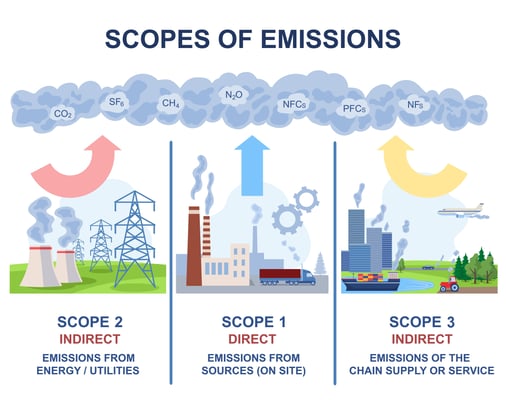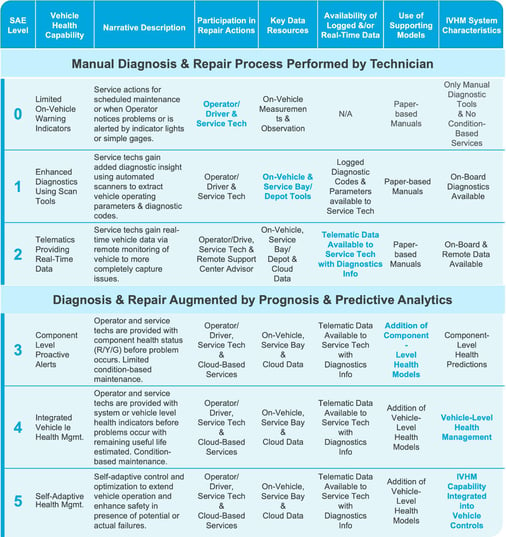Prognostics and Health Management for Safer Electric Vehicles
Written by Yuvaraj Pemmasani 20 Feb, 2023
Sustainability goals and an effort to move toward a greener world have resulted in exponential growth in the adoption, demand, and market for Electric Vehicles (EVs). EVs play a crucial role in promoting decarbonization and green transportation; hence, the automotive industry is investing in technologies, developing and producing a variety of EVs, Plug-in Hybrid Electric Vehicles (PHEVs), Battery Electric Vehicles (BEVs), Fuel Cell Electric Vehicles (BEVs) and Solar Electric Vehicles (BEVs). All these vehicles primarily rely on electric powertrains equipped with different sizes and capacities of components (motor, battery, etc.) having plug-in charging, in-vehicle power production, and regeneration capabilities.
With innovations and research leading to new technologies in the EV world, more complex architectures with hardware and software are being introduced. There is massive demand to improve the operations, reliability, safety, and availability of EVs by using real-time monitoring, fault diagnosis, fault prediction, and health management. However, OEMs and suppliers are struggling to bring reliable and durable products to market. While the EV industry is undergoing continuous developments and research, challenges like lack of charging infrastructure, range anxiety, and safety are slowing the adoption of these vehicles.
Challenges in the EV industry
Automobile enthusiasts are constantly seeking new enhancements and features in the EV sector. Increased carbon emissions, depleting reservoirs of fossil fuels (petrol and diesel), and soaring fuel prices thanks to global geo-political tensions are increasingly driving consumers to consider electric vehicles. While the supply chain shortage is not impacting EV market growth, some grave concerns need to be addressed to meet the exploding demand:
Increasing complexity
Demand increases in direct proportion to the increased complexity of systems and controls. The sustained growth of the electric vehicle industry means that automotive engineers will face new challenges in designing them. From design, safety, and durability to performance and efficiency, the overall architecture demands a certain build and flexible features for optimum utilization.
Pitfalls of traditional diagnosis
Vehicle downtime is inevitable. A robust diagnosis methodology can help detect a failure in real time and provide ways to mitigate unplanned interruptions while on the road. Reacting before major failures occur is important for OEMs to avoid the huge losses that recall and multiple workshop visits could incur.
Safety
Safety is a significant concern among EV consumers. Every day we come across petrifying instances of EVs catching fire randomly, raising serious questions about the quality of these mass-produced vehicles. Safety is in sharp focus with higher-density batteries and new E/E architecture that ensures the complexity of future vehicle systems stays manageable.
Reliability and durability
By 2030, the number of EVs on the road is expected to increase to about 50 million, while annual sales are expected to reach 10 million per annum, clocking a CAGR of 49% between 2022 and 2030. Thus, time-to-market is an extremely significant factor in EV development. However, introducing new products and enhancements within a short time span is a significant challenge for manufacturers, given the growing adoption of EVs.
Higher maintenance costs
Despite the exponential growth in EVs, the expertise to deal with faults/issues is lagging. Finding well-trained technicians to provide quality services is a massive challenge in the EV industry. Consumers and manufacturers thus find it difficult to pinpoint the source of faults/issues based on diagnostic trouble codes (DTC) reported. This results in inadequate or wrong diagnoses leading to higher maintenance costs and delays.
Performance and efficiency
Constant monitoring and maintaining the health of components, especially for fleets, is vital. This helps avoid unwanted or unplanned maintenance and keeps the supply chain in sync with increasing demand.
Diagnostics, prognostics, and health management of EVs
Diagnostics is an assessment of a system's current (and past) health based on observed symptoms and patterns. It deals with fault detection, isolation, and identification when a fault occurs.
Prognostics is an assessment of future health. It determines whether a fault is impending, providing an estimate of how soon and how likely a fault will occur, and in the process of monitoring the health, predicting its remaining useful life (RUL), degradation, etc.
Health management leverages prognostic information to make decisions related to safety, condition-based maintenance, inventory, and product life extension.
Prognostics and health management (PHM) permits the evaluation of a system's reliability in its actual life cycle conditions.
From diagnostics to prognostics
Conventional combustion/spark-ignited engine-based vehicles concentrate on their respective diesel/gasoline engines and exhaust after-treatment systems, with lesser emphasis on transmission. Data is typically extracted via the OBD (Onboard Diagnostics port) port per industry standards for these vehicles. EVs, on the other hand, are not constrained by such standards. Most fully electric vehicle models have no OBD ports, except in hybrid powertrains. The primary focus of EVs is on the battery, which is a major component, generating the greatest number of unknown variables. Apart from the focus on battery-related issues, EVs comprise a motor system, inverter, onboard charger, DCDC converter, electronic control systems, etc., which are also safety-critical systems and are monitored for performance, efficiency, safety, and longevity.
Traditional diagnostics ensure timely detection and identification of faults which help execute immediate recovery strategies for continued safe operation in “limp home” mode. Prognostics, however, aid in judicious predictions, conducting performance assessments, developing degradation models, and analyzing degradation patterns. Achieving full prognostics capability to predict possible failures at the earliest, which also helps accurately evaluate RUL, will give OEMs and suppliers an edge in bringing EVs to the market.

Why prognostics?
Network connectivity and vehicle communication are taking precedence, especially in the EV sector. Communication capabilities of EVs facilitate early warnings of plausible incidents caused due to poor road conditions with live data streaming and generate reports of the vehicle’s components and systems. This offers vast benefits regarding safety, reliability, vehicle management, maintenance, economy, life of components and systems, and the overall vehicle.
Prognostics offer several advantages. With the right kind of predictive analysis solution, the following is possible:
- Reduction in vehicle downtime to almost zero
- A shift from condition-based maintenance to time-based maintenance
- Optimal decision-making in scheduling maintenance
- Optimal planning of inventory and spares
- Increase in safety and reliability of components, systems, and the vehicle as a whole
- Improved performance and lifetime of components/vehicle
- Reduction in warranty claims, saving costs
- Supporting faster product development cycles with analysis of historical and test data collected

How is the prediction made?
Prediction of the life of a component/system is based on three methods:
- Physical model-based method
- Data-driven method
- Fusion method

The primary functions of the electric vehicle PHM system are information collection (data capture), fault detection, fault diagnosis, fault prediction, and health management.
Data capture: Capture of data from sensors, integrating factory parameters, and testing all data, including real-time driving data of electric vehicles, to form a health management database.
Data communication: The data from sensors/vehicle is collected and sent over a WAN or LAN-based communication platform from, say, telematics and edge devices to a cloud facility.
Data evaluation and prediction: Determining the performance degradation state of components, such as a normal state, performance degradation state, or function failure state, and predicting the time they might fail.
Health management: Making condition-based maintenance decisions on components such as battery and motor according to the information on fault detection, fault diagnosis, and fault prediction.
Challenges in shifting from diagnostics to prognostics
The connected vehicle is not a new concept, and much research and development have gone into introducing advanced technologies. Yet most players in the automotive industry are still to shift from diagnostics to prognostics.
The connected vehicle is not a new concept, and much research and development have gone into introducing advanced technologies. Yet most players in the automotive industry are still to shift from diagnostics to prognostics.
- Collaboration between the OEM and Tier 1 EV companies on data exchange so that Tier 1 can help build the prognostics for their subsystems.
- Requiring changes to in-vehicle communication architecture and sub-system architecture to bring out failure mode scenarios.
- Difficulties encountered during data exchange from another subsystem to Tier 1's competitor in performing correlated analysis to build the prognostics model.
- Critical fault processing at the edge gateway because not all scenarios can wait for backend decisions.
Integrated Vehicle Health Management (IVHM)
IVHM refers to the unified capability of systems to assess the current or future state of member system health and integrate it within a framework of available resources and operational demand (as defined by SAE's IVHM Steering Committee). To facilitate easy and successful implementation of IVHM, SAE International has come up with a standard: SAE JA6268. This standard seeks to provide uniform requirements, practices, and methods of sharing critical component/subsystem’s design-time information facilitating real-time platform-level communication, and implementing supplemental IVHM functions.
Historically, component suppliers operated in the diagnosis-only paradigm focused on the detection and identification of the root cause(s) only once a failure had occurred. With the IVHM or prognostics paradigm, however, the supplier must also enable health monitoring and tracking of system degradation severity to prevent a given component from experiencing an unreported degradation to the point where it exceeds its operational performance envelope.
The key to unlocking the potential of IVHM is the availability of health-ready components. Health-ready components are supplier-provided components or subsystems which have been augmented to monitor and report their health or those where the supplier provides the integrator sufficient information to accurately assess the component's health via a higher-level system already on the vehicle.
The SAE's IVHM Standards Committee has defined a progression of IVHM capability levels, shown in the table below.

The levels mentioned imply no particular order of market introduction. Elements indicate minimum rather than maximum system capabilities for each level. A system may have multiple IVHM features, operating at different capability levels depending on the features engaged. The automotive industry aims to achieve IVHM capability Levels 3 and 4 as defined by SAE.
Further, SAE International has established a global HRCS (Health Ready Components and Systems)/IVHM (Integrated Vehicle Health management) community to create best practices and uniform information-sharing methods between OEMs and their supplier base. This will facilitate the industry-wide application of IVHM technology with HRCS and accelerate the adoption of effective solutions across the industry.
Preventive potential
There are s upsides to using prognostic health monitoring for electric vehicles. These include improved performance and reliability of components, systems, and vehicles as a whole, near-zero downtime, mission dependability, safety, reduced maintenance visits, efficient supply of spare parts, and reduced maintenance costs. PHM’s ability to prevent potentially catastrophic failures clearly indicates how far the EV industry has come and how this will become one of the significant drivers of market growth.
Vehicles of the future will be connected, autonomous, electrified, and shared. Prognostics and health management of vehicles will play a key role in intelligent and meta-mobility, accelerating the current transformation in the automotive industry and increasing the safety and reliability of vehicles.
For more details about intelligent and meta-mobility and other Megatrends, check out our report: https://lnkd.in/g5brrfbj
About the author
Yuvaraj works as a principal architect in the electric mobility domain. He has hands-on experience in automotive embedded systems, powertrain systems, and electric mobility technologies, particularly in engine, vehicle, and charging controls development.
.png?width=774&height=812&name=Master%20final%201%20(1).png)